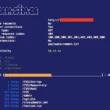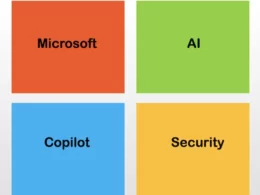Global cloud adoption continues to grow as more organizations experience the benefits of cloud solutions. A Research and Markets report shows that the cloud market will grow at a CAGR of 17.9 percent for the forecast period 2020 to 2027. Interestingly, revenue growth in the cloud security market significantly outpaces the overall cloud market growth.
Data compiled by Statista shows a CAGR of 38.17 percent for the forecast period 2023 to 2028. The demand for security solutions aimed at cloud environments appears to be overtaking cloud adoption as organizations turn to new cybersecurity solutions to address new challenges affecting the cloud.
One of the strong drivers of cloud security growth is extended detection and response (XDR), which is projected to grow at an impressive 38.4 percent CAGR (2023-2028). This is good news as it means that organizations are taking cognizance of the changing cybersecurity needs amid the commonplaceness of cloud services. XDR is particularly effective at providing security across multiple attack vectors, which are prevalent in cloud and hybrid setups.
Emphasis on cloud security
XDR changes the way cybersecurity works, mainly from being purely reactive to becoming proactive. Many organizations continue to use security controls and mechanisms that are based on threat signatures and the detection of predefined activities and anomalies. This no longer works amid the complexity of modern IT infrastructure and the diversity of devices and assets involved. Cloud services and hybrid environments, in particular, create new complexities that make it necessary to change the way security is implemented.
The widespread use of cloud applications and services entails new realities or scenarios that are unlikely covered by conventional cybersecurity. For one, cloud adoption results in perimeterless environments, wherein clear network boundaries are virtually nonexistent. Organizations need solutions that can adapt to provide adequate protection for IT assets beyond traditional network perimeters.
Additionally, cloud security calls for a shared responsibility model. It is reasonable to expect cloud service providers to be responsible for the security of their cloud infrastructure, but customers also need to assume responsibility for the protection of the data and apps they put on the cloud. Organizations should not fully entrust their cloud security to third-party providers lest they risk the possibility of threat actors finding and exploiting vulnerabilities.
The multi-tenancy option for cloud services also complicates cybersecurity. With numerous users and devices relying on a common cyberinfrastructure, it is difficult to properly isolate assets whenever attacks take place. It is also challenging to institute efficient access control when there are too many users and devices to oversee.
Meanwhile, the heavy reliance on application programming interfaces (APIs) makes cloud security more challenging. Conventional security solutions pay little attention to API management and access control. They may not even take into account the concept of API security, which has to address issues such as broken authentication, broken authorization at different levels (object property, function, etc), unrestricted resource utilization, server-side request forgery, misconfigurations, and the unsafe use of APIs.
Moreover, the use of cloud services requires cybersecurity solutions that are dynamic, scalable, automatable, and compliant with new regulations including data residency requirements. It is also important to be prepared for cloud-native threats such as cloud resource misconfiguration, data leaks due to negligence or insider threats, and cloud-specific vulnerabilities many organizations tend to overlook.
How XDR helps
XDR addresses the security challenges that are unique to cloud and hybrid environments through its four main capabilities:
- Comprehensive collection of security-related data
- Advanced data analytics
- Centralized management
- Automation of incident response
Extended detection and response entails the gathering of various data from different sources to establish extended security visibility. It is designed to maximize the impact of security data to have full awareness of all of an organization’s assets. The huge amounts of data are used not only to broaden visibility but also to obtain context.
When it comes to data analytics, XDR takes advantage of artificial intelligence to rapidly and continuously evaluate network activity. This AI-driven analysis of data does not only detect potential issues based on threat signatures and security frameworks. It also undertakes behavioral analysis to spot potential issues and anticipate attack campaigns.
The comprehensive collection of security data from various sources supports centralized cybersecurity management. All of the collected data is analyzed through a unified interface, which makes it easier to manage all cybersecurity activities and respond to threats and attacks promptly. Additionally, it facilitates the more efficient investigation of threats since all the details and controls needed are brought together in an intuitive unified interface.
Aside from making it more convenient to comprehensively manage an organization’s cybersecurity, XDR also supports incident response automation and orchestration. It enables the configuration of specific responses to certain activities or triggers to expedite responses and reduce the need for human intervention. It also supports the orchestration of a series of actions to handle sophisticated attacks that employ different methods to reduce the chances of getting detected and prevented. These are important attributes of XDR as they support scalability and dynamism in detecting and responding to adversarial actions.
Ensuring suitable security
XDR is a robust solution in addressing cyber threats and attacks as more and more organizations move towards cloud and hybrid environments. It provides the benefits of integrated visibility, unified management, rapid time to value, and enhanced security operations productivity. It supports real-time threat detection with its AI-aided behavioral analytics function. Additionally, its automation and orchestration functions ensure efficient cyber protection.
The holistic approach XDR takes in addressing new threats, especially those brought about by the migration to cloud infrastructure and services, makes it a must for modern organizations. By covering virtually all attack surfaces that will likely be targeted by aggressive and cunningly creative cybercriminals, XDR is a compelling response to the challenges of securing organizations that have already adopted cloud services but are having a hard time keeping up with the new security vulnerabilities as well as those that are still in the process of moving to the cloud and are encountering unfamiliar threats and sophisticated attacks.











